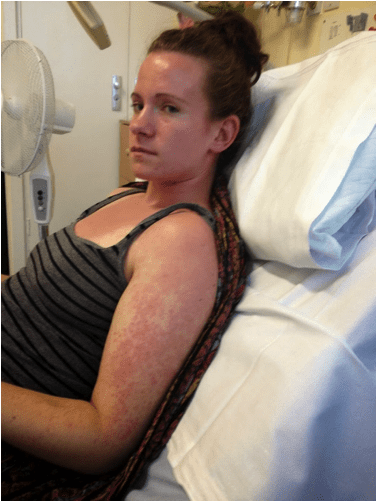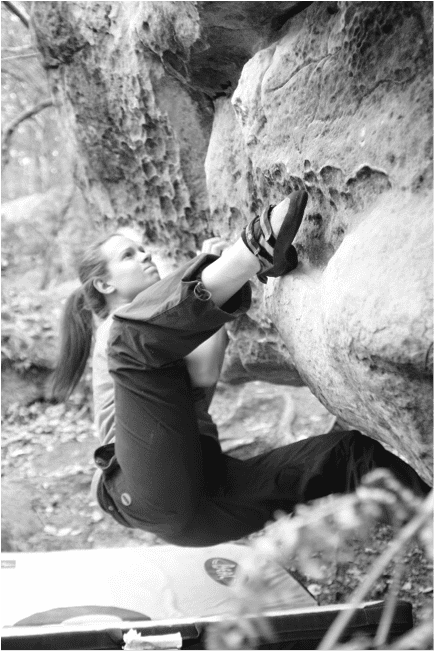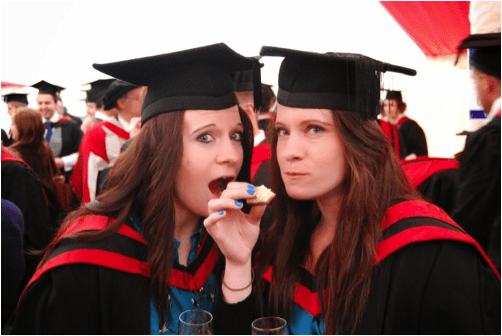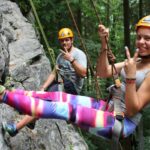Climbing With A Chronic Illness: A colleague introduced me to climbing a few years ago in the hope it would help with my insomnia. Little did I know that climbing would help me with so much more than insomnia. When I first got into climbing, I was going through a tough time having lost my father to cancer and trying to complete my architecture course at Leeds Beckett University. Climbing was a revelation – I felt free. I didn’t have time to think about any of my worldly worries.

Feeling exhausted for the right reasons in Montserrat, Spain
Thank you to today’s guest contributor, Leigh-Anne, for sharing her story with us.
I was too busy clinging to minuscule rock indentations while my feet smeared the wall with the aid of shoes that made me feel like Spiderman. I was addicted.
Climbing With A Chronic Illness?
A year ago I became very ill. I remember the day clearly as it was the same day I found out I had become an architect. I had been promised fish and chips to celebrate but I remembered feeling light-headed all day. That evening I walked into the chippy and, eyes always bigger than my belly, I increased my order to a large. While it was being prepared I suddenly felt sick and dizzy. We got home and I could barely eat a thing – that was when everything started to go downhill.

A drug reaction in the hospital
I spent the next two weeks at home with what I thought was the flu. When I didn’t improve, I was eventually admitted to The Royal Hallamshire Hospital, suffering fevers with temperature spikes up to 41 degrees (105.8 F). I spent much of that year in and out of the hospital, taking a tour of the various wards as the doctors carried out a battery of tests in an effort to discover what was wrong with me. After several months I was diagnosed with a rare autoimmune disease (the present thinking is a variation of Adult Onset Stills Disease).
It was an extremely scary time and I was fortunate to have a brilliant support network around me; my twin sister, boyfriend, friends, and family.
Before we continue to the topic, don’t forget to check out “how to deal with Gnarly Hands.”
When I was diagnosed, I didn’t realize millions of people live day-to-day with chronic illnesses. They suffer from symptoms that affect every aspect of their lives: unrelenting pain, debilitating fatigue, shortness of breath or vertigo, and damage to vital organs, to name just a few. Then there’s the time snatched away with endless check-ups and hospital visits. Learning to live day-to-day with an unpredictable, rare medical condition can lead to frustration and a lot of built-up anger.
My flares – which can involve high temperatures and fevers, muscle aches and spasms, uncontrollable shaking, nausea, headaches, and more – seem to vary and can be triggered by illness, tiredness or stress. These can last for days or weeks and can sometimes leave me bed ridden. It’s very disheartening to be climbing at a certain level and then having to start again after a flare. I feel weak and the fatigue is painful but all I want to do is climb.
When I was told I had an autoimmune disease I searched and searched the internet for a cure. It seems daft, especially when people say don’t believe everything you read on the internet, but I was desperate for answers. I wanted to find a cure. Now, having lived with the condition for nearly two years, I have accepted it and understand more about the various types of medication and treatment. It is different for each individual and, having seen several doctors, it took an element of trial and error to find a solution that works for me.
Then I started Rock Climbing
This search for a solution that works for me is something I have transferred directly from my illness to my climbing. I’ve come to understand that climbing and wha works in climbing is individual to you whether you enjoy trad, bouldering, competitions, red pointing, or yo-yoing. To me, climbing is about enjoyment and having fun although it’s taken a while to realise that. When I first got into climbing, I was frustrated by not being able to climb certain climbs that my fellow climbers could. Through my battle with my chronic illness, I learned to make climbing work for me.
After much reflection, I found that for me, climbing is not about chasing grades, it’s about accessing some of the most amazing places around the world: Fontainebleau, Rocklands, Switzerland and my home turf the Peak District.

Trying hard, even during the drug reaction. Photo: Mike Etchells
I realized Nothing Useless That Comes To You!
I never expected my illness would teach me something about climbing. I’ve learned to get my priorities straight by making sure I understand what is important to me, what makes me happy, and then going out and doing it. My illness hasn’t stopped me from climbing or traveling but everything takes a little more planning. For example, I take weekly injections that need to be stored in a fridge, so wherever I’m going for more than a week I need to ensure I can refrigerate them. But this hasn’t stopped me.
Some of the drugs I take cause certain side effects that have been a problem with my climbing. I noticed the skin on my hands and around my fingernails peeling, which became sore and irritating. I later discovered my injections cause dermatitis. But that hasn’t stopped me. I found a chalk with no drying agent and treat my skin like it was royalty – regularly using moisturizer and washing chalk off as soon as I’ve finished climbing. I’ve not started wearing rubber gloves in the shower… yet.
My illness also means my weight constantly fluctuates due to the inflammation. When I’m about to flare my body becomes inflamed and I gain weight. This is hard for any climber to accept. I have overcome this by treating it as weight training, knowing that my weight will return once I have controlled my flare.

The author and her sister are on graduation day.
I was on a trip in Fontainebleau, shortly after having come out of a flare, and was downing prescribed steroid tablets by the dozen – doctor’s orders. They help dampen my immune system, which goes haywire during a flare. During the 8-hour road and ferry trip, I came out in a rash due to a drug reaction. I had a few of these reactions in hospital so, luckily, I could see this wasn’t anything too serious. I could’ve let this get on top of me, drive me to despair, lead me to thinking I was going to flare again, but I didn’t. After a few days the rash disappeared and I completed my tick list.
At the moment, I am back to training and trying hard, as my condition seems to be settling thanks to the medication. Although I find training boring, I know training is part of taking me to my next climbing destination!
Climbing has given me so much – friends, freedom, adventures and I even met my amazing partner through the sport. I was terrified of losing climbing because of my illness. One of the main things I have learnt is: life is short. So if you want to do something or go somewhere, find a way to get out there and do it. Don’t let anything stop you.
Climb on! ~Leigh-Anne






